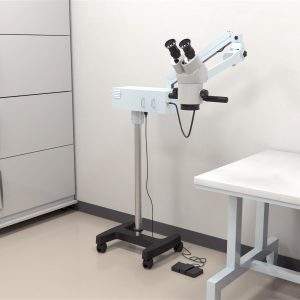$560.00
Vertical electrophoresis tanks are generally used for the analysis and size separation of nucleic acids, i.e., DNA and RNA.
The horizontal electrophoresis system is made of acrylic and comprises two buffer chambers, each containing an electrode. The apparatus consists of a casting tray, vertical electrophoresis tank, gel combs, electrodes, and a power supply. Conduct Science offers two different models of horizontal electrophoresis tanks. Each model has different sizes of casting trays and gel combs.
ConductScience offers Electrophoresis Tanks.
Power pack sold separately, please see here.

Servicebio is a company that specializes in providing high-quality products and services for biomedical research and diagnostics.



This product is a rectifier device that converts alternating current into direct current. It can convert alternating current into controllable constant voltage and constant current direct current to meet the needs of experimental production such as electrophoresis. It is widely used in biology, medicine and other fields, such as nucleic acid gel electrophoresis, Protein gel electrophoresis, Western Blot protein transfer and other experiments.
Specifications | SB-SVE-2 |
|---|---|
Dimensions (L*W*H) mm | 185x108x125 |
Gel size/transfer size (mm) | Gel size 83x73 |
Maximum volume of buffer (ml) | 500 |
Item | Product | Quantity |
|---|---|---|
1 | Electrophoresis scaffold body | 1 Set |
2 | Gel base | 1 Set |
3 | Electrophoresis box | 1 Set |
4 | 1.0mm electrophoretic glass | 2 Set |
5 | 1.5mm electrophoretic glass | 2 Set |
6 | 1.0mm 11 tooth sample adding comb | 2 Pcs |
7 | 1.5mm 11-tooth sampling comb | 2 Pcs |
8 | Glass replacement plate | 1 Pcs |
9 | Gel cutting board | 3 Pcs |
10 | Prefabricated gel seal | 2 Pcs |
Vertical electrophoresis tanks are primarily used for nucleic acid and protein sequencing via vertical gel electrophoresis. In a vertical electrophoresis system, the gel matrix is cast vertically in a discontinuous buffer system, and two chambers, i.e., a top chamber and a bottom chamber, are employed.
The vertical electrophoresis tanks employ a discontinuous buffer system comprising a top and a bottom chamber. The top chamber contains a cathode, and the bottom contains an anode. Electrodes present in both chambers generate the required electric field. A thin gel of less than 2mm is poured between two glass-mounted plates so touch that the upper part of the gel is submerged in the upper buffer chamber while the bottom of the gel is immersed in the lower buffer chamber. As soon as the electric field is applied, a small amount of buffer migrates through the gel from the upper chamber towards the lower chamber. As the buffer moves via the gel only, the experimenter has full control over the voltage gradients throughout the experiment. A vertical gel electrophoresis tank allows the researchers to achieve a more effective separation with greater resolution.
Unlike horizontal electrophoresis, vertical systems mostly use polyacrylamide gels with a smaller pore size (about 10-200nm). Acrylamide gel cannot be used for horizontal gel electrophoresis. The gel in the horizontal system must interact with environmental oxygen, and exposure of acrylamide to oxygen can inhibit acrylamide polymerization, thereby interfering with gel formation. In vertical electrophoresis, the buffer only migrates through the gel, and individual compartments do not get exposed to oxygen.
Moreover, acrylamide concentration controls the gel’s pore size and the degree of crosslinking. Pore size decreases as the total acrylamide concentration increases, and the amount of cross-linker is determined relative to the total acrylamide amount. On the other hand, pore size is parabolically related to crosslinking, i.e., at high and low cross-linking, pores are larger in size, whereas they are minimum in size at 4% crosslinking.
The vertical electrophoresis tank is made of acrylic and comprises an upper and a lower buffer chamber. The apparatus is equipped with two gel-cast frames and glass plates. The glass plates are accurately aligned to prevent gel leakage. There are two combs for creating wells. The built-in ridges in the combs isolate gel from the air and avoid polymerization reaction in the gel. Gel cast frame, gel cast stand, and electrophoresis core with high-quality and unique design are the features of the vertical electrophoresis tank offered by Conduct Science.
1. It can be fine-tuned online in real time in the working state;
2. Intelligent PID control, stable and reliable output;
3. High-definition LCD screen, which can display setting parameters and display real-time voltage and current values;
4. High precision;
5. With constant voltage timing, constant current timing, gradient voltage programming, gradient current programming and other working modes;
6. Adopt forward switching power supply design with good stability. With overvoltage, overcurrent, overload, variable load, no-load protection, automatic alarm protection for abnormal conditions;
7. The upper limit of output voltage or current can be dynamically set;
8. The parameters can be remembered when the power is cut off. The equipment is accidentally cut off. After power-on, the unfinished setting program can be automatically run.
Protein Fraction Identification from Cow’s Milk Casein Complex
Iukalo (2015) developed a vertical electrophoresis system to identify cow milk’s casein complex proteins. The researchers isolated individual casein protein fractions using preparative electrophoresis. They used a vertical electrophoresis tank to determine total casein’s fractional composition and homogeneity of its fractions. The polyacrylamide gel electrophoresis apparatus they used was Studier type, and it allowed change in the chambers’ geometric dimensions and the number of samples for simultaneous analysis. The electrophoresis system was optimized by reducing the dimensions of the electrophoresis chamber. The changeable dimensions of the electrophoretic chamber significantly reduced the time for identifying casein fractions. The scientists concluded that the method they developed could be useful for the robust analysis of milk and dairy products.
Use in Western Blotting for the Detection of TLR4 Expression in Spinal Cord Tissue
Han et al. (2015) studied the effect of bone marrow mesenchymal stem cell (BMSC) on TLR4 (toll-like receptor 4) levels in four-week-old male SD rats. BMSCs were isolated and identified by immunocytochemistry. Then the scientists prepared animal models for BMSC transplantation, prepared spinal cord injury sites, and detected the presence of TNF-α and IL-1β using the RT-PCR method. A vertical electrophoresis tank was used for western blotting to detect TLR4 expression in the spinal cord tissue. In addition, about 30µg of proteins were fractionated using 12% sodium dodecyl sulfate-polyacrylamide gel electrophoresis. The experimenters used GAPDH as a loading control. A gel documentation system was used for band identification, and computer software was used to quantify band intensities.
Vertical electrophoresis tanks are ideal for protein separation and identification. In vertical electrophoresis systems, the buffer can only migrate through the gel, allowing accurate voltage control during experiments. If the polyacrylamide gel with a small pore size is used, the vertical gel electrophoresis allows greater separation and resolution than horizontal systems. However, horizontal gel electrophoresis systems are sometimes preferred over vertical systems because of their ease of use.
1. The main components of this series of products are fragile products. During packaging, transportation and use, be careful not to bump or drop the product, which may cause damage to the product and cause the product to fail to work normally.
2. Metal parts such as platinum wire and electrode column in this product should be paid attention to whether there are oxidation, breakage, loosening and other problems during use, cleaning and maintenance. Please replace and maintain them in time. The platinum wire is easily broken, so be careful when handling it.
3. After daily use, please wash it with deionized water in time, and place it in a dust-free place to dry for use.
Iukalo, А. V. (2015). Identification of protein fractions of milk cows casein complex. The Ukrainian Biochemical Journal, (87,№ 4), 87-91.
Han, D., Wu, C., Xiong, Q., Zhou, L., & Tian, Y. (2015). Anti-inflammatory mechanism of bone marrow mesenchymal stem cell transplantation in rat model of spinal cord injury. Cell biochemistry and biophysics, 71(3), 1341-1347.
| Weight | 4.5 lbs |
|---|---|
| Dimensions | 45 × 45 × 40 cm |
| Brand | Servicebio |
You must be logged in to post a review.
There are no questions yet. Be the first to ask a question about this product.
Monday – Friday
9 AM – 5 PM EST
DISCLAIMER: ConductScience and affiliate products are NOT designed for human consumption, testing, or clinical utilization. They are designed for pre-clinical utilization only. Customers purchasing apparatus for the purposes of scientific research or veterinary care affirm adherence to applicable regulatory bodies for the country in which their research or care is conducted.
Reviews
There are no reviews yet.